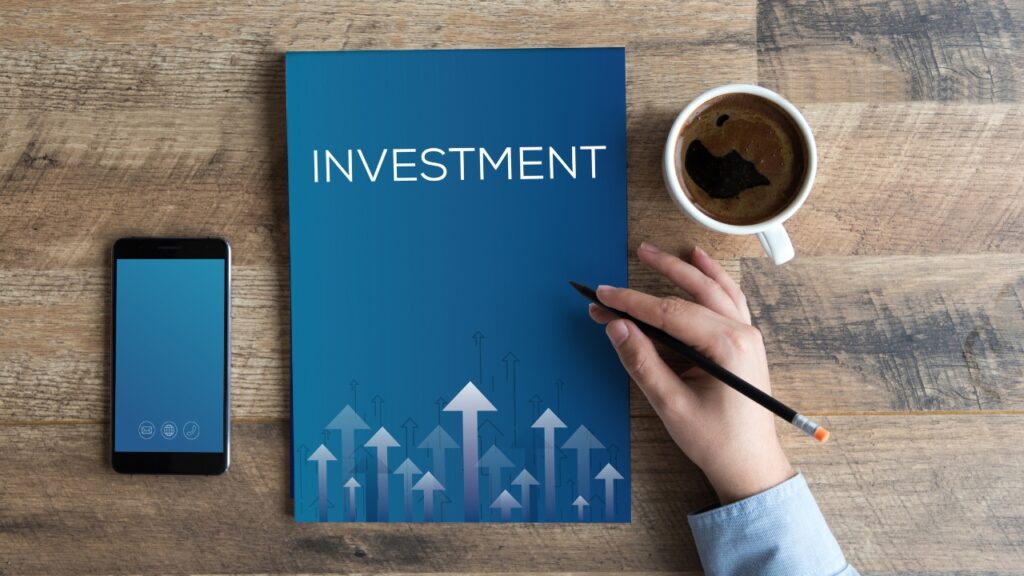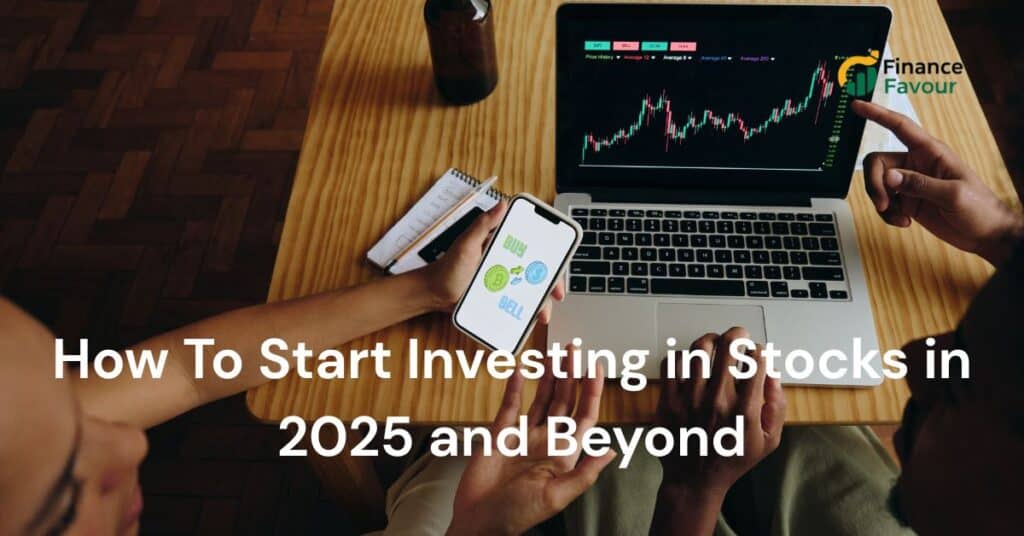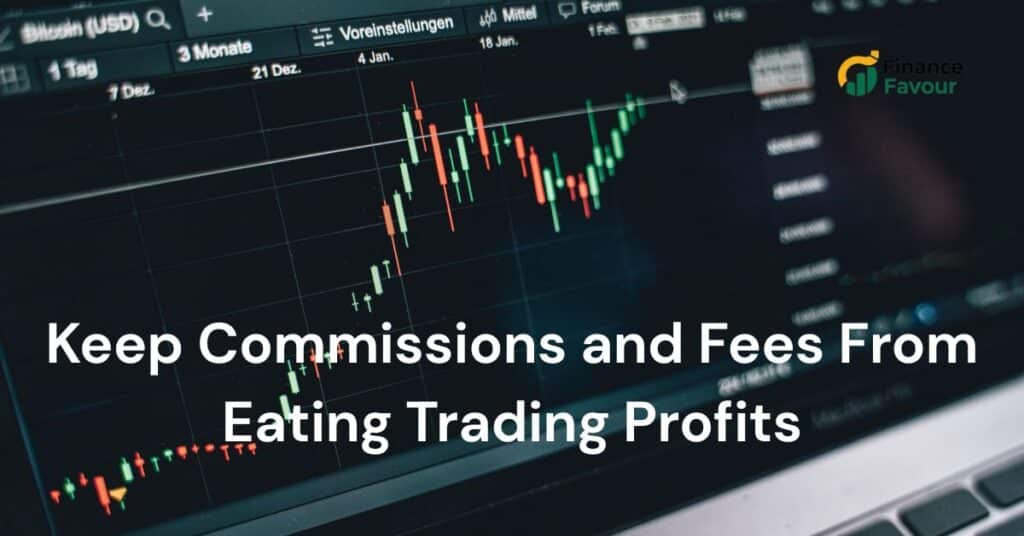Imagine this: you’re holding $5,000 in your hand. It’s not a fortune, but it’s not pocket change either. Most people would use it for a vacation, a new gadget, or just tuck it away in savings. But what if I told you that $5,000, with the right mindset, smart decisions, and patience, could grow into a whopping $1 million? Sounds like a dream, right? Well, it’s not just wishful thinking—it’s absolutely possible.
The secret? It’s all about how you invest, not just how much. Whether you’re starting in your 20s or even 40s, the journey from $5,000 to $1 million is achievable. It’s not about playing the lottery or chasing overnight success it’s about understanding compound growth, picking the right strategies, and staying consistent.
Let’s break it down step by step and uncover how your small start can turn into a massive financial success.
Understanding the Power of Compounding
What Is Compound Interest?
Compound interest is your best friend in the investment world. It’s the concept where your money earns interest, and then that interest starts earning interest too. It’s like a snowball rolling downhill, growing bigger and faster as it goes. Imagine planting a seed today and watching it grow into a forest 30 years from now—that’s compounding.
Say you invest $5,000 at a 10% annual return. In one year, you earn $500. Next year, you don’t just earn another $500 you earn interest on $5,500. By year three, you’re earning interest on $6,050, and so on. Over decades, this compounding turns modest returns into massive growth.
This is how millionaires are made not by luck, but by leveraging time and consistency.
The Rule of 72 Explained
Here’s a handy trick: the Rule of 72. It’s a quick way to estimate how long your money will take to double at a certain interest rate. Just divide 72 by your expected annual return.
For example:
- 72 ÷ 10% = 7.2 years to double your investment.
So, $5,000 turns into $10,000 in just over 7 years at 10%. Another 7.2 years later, it’s $20,000. And again, it becomes $40,000. Keep repeating, and before you know it, you’re climbing toward that million-dollar mark.
It’s like magic, but backed by solid math.
How Time Impacts Investment Growth
Time isn’t just money it’s the multiplier of wealth. The earlier you start, the more your money works for you. If you invest $5,000 at 10% annually:
- In 10 years: ~$13,000
- In 20 years: ~$33,000
- In 30 years: ~$87,000
- In 40 years: ~$226,000
- In 50 years: ~$590,000
- In 55 years: Over $1,000,000
See the leap? Most of the growth happens in the later years. That’s compounding in action.
This is why starting early even with a small amount can outperform someone who invests more later in life. It’s not about timing the market; it’s about time in the market.
Choosing the Right Investment Vehicle
Stocks and Index Funds
If you want to grow your money exponentially, the stock market is a powerful ally. Historically, it has returned around 7-10% annually, especially through index funds like the S&P 500. With low fees, broad diversification, and consistent performance, these funds make investing accessible to everyone.
Let’s say you invest $5,000 in an S&P 500 index fund with a 10% return:
- In 30 years, it grows to nearly $87,000.
- Keep reinvesting dividends and staying consistent, and that $5K keeps compounding.
Index funds are ideal because they require no guesswork. You’re not betting on one company you’re investing in the entire market. Think of it as owning a slice of the global economy.
Real Estate Opportunities
Real estate is another golden route to building wealth. It might seem impossible with just $5,000, but that amount can cover a down payment for a property using leverage. Combine that with rental income, property appreciation, and mortgage paydown, and you’ve got a wealth-building machine.
You could:
- Invest in REITs (Real Estate Investment Trusts) with as little as $500.
- Use FHA loans or partnerships to acquire income-generating properties.
- Flip undervalued homes or hold for long-term appreciation.
Real estate provides both cash flow and equity growth, making it a powerful combo for long-term wealth.
Cryptocurrencies and Emerging Assets
High-risk, high-reward. That’s the name of the game with crypto and emerging assets like NFTs or startups. Investing your $5,000 here could explode into massive returns or it could vanish. It’s not for the faint-hearted, but when approached smartly, it can complement a diversified portfolio.
Look at Bitcoin: in 2010, it was under $1. By 2021, it hit nearly $70,000. A $5,000 investment in the early days could’ve made you a multimillionaire.
Of course, don’t go all-in. These assets should be a small part of your portfolio, not the foundation. But used strategically, they can add an extra boost to your wealth-building journey.
Creating a Long-Term Investment Plan
Importance of Financial Goals
Before diving headfirst into investments, setting clear financial goals is like setting the GPS before a road trip you need to know your destination. Whether it’s early retirement, buying a home, or building generational wealth, your goal will shape how aggressively or conservatively you invest.
Think of it this way: if your goal is to turn $5,000 into $1 million in 40 years, you only need to average around a 10% return annually. But if you want to hit that mark in 20 years, you’ll need closer to a 26% return a much riskier path. Knowing your timeframe helps manage expectations and align strategies accordingly.
Write down your goals. Break them into short-term (1–3 years), medium-term (3–10 years), and long-term (10+ years). That clarity will guide your asset allocation, risk tolerance, and investment choices.
Risk Tolerance and Investment Horizon
Your risk tolerance is basically how comfortable you are with the ups and downs of investing. Some people can stomach wild market swings; others prefer a smoother ride. Your investment horizon the time until you need your money helps decide how much risk you can afford to take.
For instance:
- A 25-year-old investing for retirement in 40 years can take on more risk (e.g., stocks, crypto).
- A 55-year-old planning to retire in 10 years might lean toward bonds or real estate.
Combining your risk tolerance with your timeline gives you a clear roadmap. Aggressive investors might load up on growth stocks, while conservative ones might prefer dividend payers or index funds. The key? Stay consistent and don’t let fear drive your decisions.
Automating Your Investment Strategy
Want to know the secret sauce behind consistent investing success? Automation. It eliminates guesswork, emotional decisions, and procrastination.
Set up automatic contributions to your investment account. Even if it’s $100 a month, it adds up and more importantly, it builds a habit. Platforms like Robinhood, Fidelity, and Vanguard make it easy to automate.
Also, reinvest your dividends automatically. That small reinvestment accelerates compounding and boosts your returns over time.
When your investment strategy runs on autopilot, you’re less likely to pull out during market downturns or miss out on gains because you forgot to invest.
Strategies to Multiply Your $5,000
Dividend Reinvestment Plans (DRIPs)
DRIPs are one of the smartest strategies to grow small investments over time. Instead of taking dividend payouts in cash, these programs reinvest them into more shares of the company automatically and often commission-free.
Let’s say you invest in a company like Coca-Cola. Every quarter, you earn dividends. Instead of pocketing them, you buy more stock, which in turn earns more dividends next quarter. This snowball effect can lead to significant growth over decades.
Many big-name companies offer DRIPs, and some even allow you to buy stock at a discount. DRIPs are perfect for long-term investors who want to grow wealth steadily without active management.
Dollar-Cost Averaging
Dollar-cost averaging (DCA) is a strategy where you invest a fixed amount regularly, regardless of market conditions. It takes emotion out of investing and protects you from buying everything at the market’s peak.
Here’s how it works:
- You invest $100 every month into an index fund.
- When prices are low, your $100 buys more shares.
- When prices are high, it buys fewer shares.
- Over time, your average cost per share balances out.
DCA is especially useful for beginners and anyone looking to reduce market timing risks. It’s a simple but effective way to grow your $5,000 over time while building discipline and consistency.
Side Hustle Income Funnel to Investments
Let’s flip the script. What if instead of only investing your initial $5,000, you also started generating extra income to funnel into your investments?
Enter the side hustle. Whether it’s freelance writing, selling on Etsy, or starting a YouTube channel, extra income streams can supercharge your wealth journey. Every dollar earned and invested amplifies your compounding effect.
For example:
- You earn $500/month from a side gig.
- You invest it into index funds or dividend stocks.
- In 10 years, that could be worth over $100,000, assuming 10% annual returns.
Reinvest every dime you make from your hustle. Treat it as fuel for your investment engine. The more you feed it, the faster you’ll reach that million-dollar finish line.
Real-Life Examples of Million-Dollar Growth
Case Study 1: Investing in the S&P 500
Let’s look at one of the most tried-and-true investment strategies: the S&P 500. It represents the 500 largest U.S. companies and has historically delivered around 10% average annual returns.
If someone invested $5,000 in the S&P 500 and did nothing else, just let it ride for 40–50 years, they could easily see it balloon past $1 million thanks to compounding, reinvested dividends, and market growth.
Warren Buffett, one of the world’s richest men, swears by index investing. He even advised his heirs to invest in low-cost S&P 500 index funds. If it’s good enough for him, it’s good enough for us.
Case Study 2: Real Estate Flip and Hold
Imagine using $5,000 as a down payment on a fixer-upper. You renovate it, increase the property value, then either sell it for a profit or rent it out. This strategy flip and hold can yield massive returns.
Let’s say you flip for a $20,000 profit. Then you roll that into a new property. Do it a few more times, and you’re not just growing your wealth you’re scaling it. Eventually, you build a portfolio of rental properties producing passive income and equity growth.
Real estate offers leverage where a small investment controls a much larger asset. Use it wisely, and that $5,000 becomes the foundation for a million-dollar empire.
Case Study 3: The Crypto Boom Success
No article about explosive growth is complete without mentioning crypto. Let’s take Bitcoin. In 2011, Bitcoin was trading at around $1. By 2021, it hit nearly $70,000.
A $5,000 investment in Bitcoin back then would be worth over $300 million today. While that’s an extreme example, there are countless stories of early adopters turning small amounts into massive gains.
Of course, the crypto world is volatile and risky. But for a portion of your portfolio say 5–10% it can offer unmatched growth potential. Diversify and only invest what you can afford to lose.
The Psychology of Investing
The Role of Patience and Discipline
We’ve talked numbers, strategies, and real-life examples. But what separates successful investors from the rest? One word: patience. The market will test you. There will be ups, downs, crashes, booms. But if you stick to your plan and stay invested, your patience will be rewarded.
Think of investing like growing a tree. You don’t dig it up every week to see if the roots are growing. You water it, give it sunlight, and wait. Similarly, you don’t need to constantly tinker with your investments. Just stay the course.
The discipline to invest regularly even when the market looks scary is what builds long-term wealth. Ignore the noise. Trust the process. And give your money the time it needs to work for you.
Avoiding Common Mistakes
Let’s be real: investing isn’t always smooth sailing. Many people derail their million-dollar dreams by making a few avoidable mistakes. Here are the big ones to watch for:
- Trying to time the market: No one can consistently predict highs and lows. Trying to do so often leads to buying high and selling low.
- Emotional investing: Fear and greed are powerful. They can lead you to make impulsive decisions that hurt in the long run.
- Ignoring fees: High fees eat away at returns. Stick with low-cost index funds and avoid excessive trading.
- Neglecting diversification: Putting all your money in one stock, asset, or industry is risky. Spread it out to manage risk better.
Avoid these traps, and you dramatically increase your chances of success.
Leveraging Tax-Advantaged Accounts
Using Roth IRAs and 401(k)s
Here’s a powerful way to boost your returns without investing a single extra dollar. Use tax-advantaged accounts like Roth IRAs and 401(k)s. These accounts either let your money grow tax-free or tax-deferred, which can save you tens or hundreds of thousands over time.
With a Roth IRA:
- You contribute after-tax dollars.
- Your investments grow tax-free.
- Withdrawals in retirement are tax-free.
Imagine turning $5,000 into $1 million and not paying a dime in taxes on the withdrawal. That’s the magic of a Roth IRA.
401(k)s, especially with employer matching, offer another path to multiply your investment. Always contribute enough to get the full match it’s free money. Then invest it in solid, diversified funds and watch it grow.
Reinvesting Returns and Staying Consistent
The Importance of Reinvestment
Reinvesting your gains, rather than spending them, is crucial. Whether it’s dividends, interest, or profits from sales put them right back to work. This accelerates your compounding journey.
Let’s break it down:
- You invest $5,000 in a dividend stock that pays 4% annually.
- Instead of cashing out $200 each year, you reinvest it.
- That $200 earns its own returns, which you also reinvest.
- Repeat for 30 years, and that 4% becomes a huge wealth builder.
It’s tempting to spend small gains, especially early on. But the investors who reinvest—and keep doing it are the ones who build serious wealth.
Monitoring and Adjusting Your Portfolio
Rebalancing for Risk Management
As your investments grow, some assets will outperform others. Over time, this shifts your original asset allocation and can increase your risk. Rebalancing is the process of adjusting your portfolio to maintain your desired risk level.
Let’s say you started with:
- 70% stocks
- 20% bonds
- 10% crypto
After a few good years, your crypto blows up and becomes 30% of your portfolio. That’s a lot riskier than you originally intended. Rebalancing brings it back in line, keeping your risk in check.
Most experts recommend rebalancing once or twice a year. It helps you lock in gains, reduce risk, and stay aligned with your goals.
The Millionaire Mindset
Thinking Long-Term and Staying Motivated
Turning $5,000 into $1 million starts with belief—and ends with persistence. You need the mindset of a long-term thinker. That means focusing on decades, not days. Staying consistent through market crashes, resisting the urge to sell, and ignoring financial media panic.
Track your progress. Celebrate milestones along the way. And remember: it’s not about getting rich quick—it’s about getting rich eventually.
Many millionaires didn’t hit that status overnight. They started with small amounts, invested consistently, and stayed committed. If they did it, so can you. The key is to start, stay the course, and believe in the power of time.
Conclusion
Turning a humble $5,000 into a jaw-dropping $1 million isn’t some financial fairy tale it’s a real possibility with the right mix of strategy, discipline, and patience. The journey starts with understanding how compounding works, picking the right investment vehicles like stocks, real estate, or crypto, and committing to a long-term plan.
Success in investing is less about how much you start with and more about how you grow it. By reinvesting returns, avoiding common mistakes, using tax-advantaged accounts, and staying the course even during tough times, your small seed can grow into a financial forest.
This is your roadmap. Whether you’re 18 or 48, the time to start is now. Plant that $5,000, nurture it, and watch it bloom into something truly incredible. Because yes—you can become a millionaire.
Check this post The Impact of Marital Status on Investment Success
FAQs
It depends on your rate of return. At a 10% annual return, it takes about 55 years. With higher returns, the timeline shortens significantly.
Yes, over the long term, the stock market has historically returned around 10% annually, especially through diversified index funds.
Absolutely. With leverage, rental income, and appreciation, real estate can multiply small investments—though it typically involves more active management.
It depends on market conditions and your comfort level. Lump-sum investing often outperforms over time, but dollar-cost averaging can reduce risk.
Index funds in a Roth IRA or 401(k) offer one of the safest, most tax-efficient, and proven ways to grow small investments into large sums.




